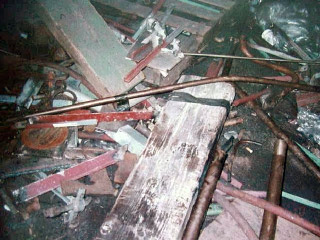Housekeeping
Effective housekeeping can eliminate some workplace hazards and help get a job done safely and properly. Poor housekeeping frequently contributes to accidents by hiding hazards that cause injuries.

Effective housekeeping is an ongoing operation. It is not a hit-and-miss cleanup done occasionally. Periodic “panic” cleanups are costly and ineffective in reducing accidents.
Workplace housekeeping:
Poor housekeeping can be a cause of accidents such as:
-
Tripping over loose objects on floors, stairs and platforms;
-
Being hit by falling objects;
-
Slipping on greasy, wet, or dirty surfaces;
-
Striking against projecting, poorly stacked items or misplaced material; and
- Cutting, puncturing, or tearing the skin of hands or other parts of the body on projecting nails, wire, or steel strapping.
To avoid these hazards, a workplace must maintain order throughout a workday. Although this effort requires a great deal of management and planning, the benefits are many.
Good housekeeping habits:
-
Remembering it is part of your daily job duties;
-
Developing a routine cleaning schedule;
-
Reporting overcrowding or unsafe conditions;
-
Clearly marking physical hazards or areas of concern; and
- Cleaning as you go.
Safe housekeeping requires that each one of us be constantly on the lookout for hazards and take the necessary action to eliminate or control them.
A place for everything…everything in its place!!
Download flyer: STOTW_309_Housekeeping.pdf (285.04 kb)
Download flyer (Spanish):STOTW_309_Housekeeping_esp.pdf (285.34 kb)

